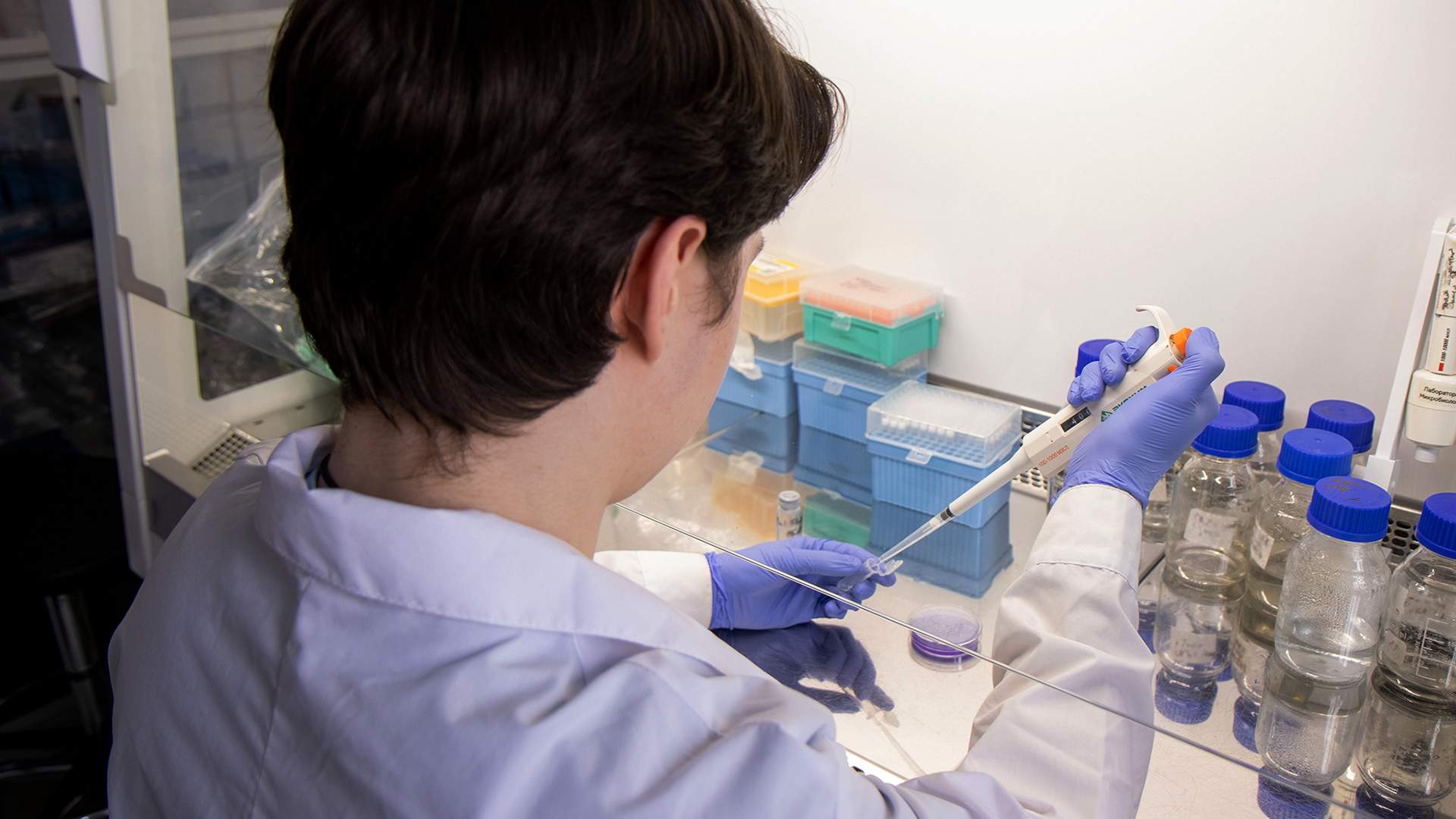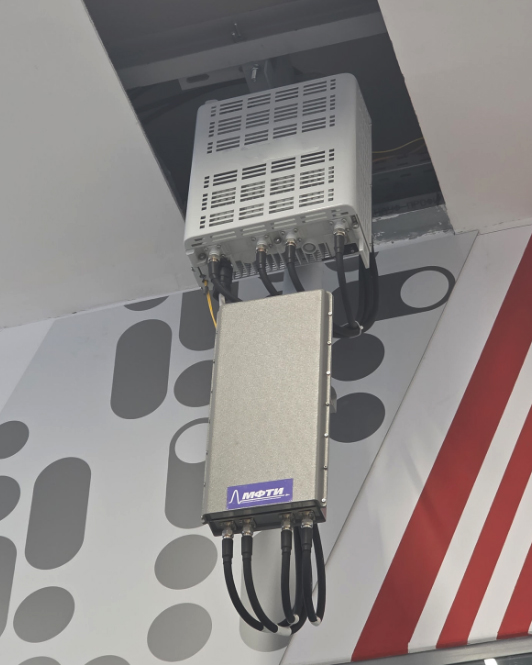Base move: Stations on the moon and AI to search for ancient cities

In Russia, engineers have created the fastest cellular antenna in the country, and microbiologists have developed a mobile application for rapid quality testing of fermented dairy products. At the same time, archaeologists have trained neural networks to find ancient settlements and burial grounds without excavation, and planetary researchers have found out which sites on the Moon are the most convenient for hosting national bases. In addition, an international team of scientists has discovered a new interstellar object. This is stated in a selection of the most interesting scientific news prepared by Izvestia.
Russia has created an antenna for 5G
Engineers from the Moscow Institute of Physics and Technology have created a 5G antenna, which provides data transfer rates between the base station and mobile phones up to 1 Gbit/s. For comparison, it is at least 10 times faster than the home Internet. The tests took place in Moscow at VDNKh.
As the developers explained, it is especially important that the device supports MIMO technology. It assumes multi-channel input and output. This allows you to serve multiple users at the same time without loss of speed.

"The test results demonstrate the fundamental possibility of fifth—generation mobile communication networks based on domestic technical solutions with speeds of about 1 Gbit/s, which, in turn, means technological readiness to deploy commercial services," explained Grigory Seregin, head of the Department of Applied Research and Development of advanced cellular solutions at MIPT.
He noted that only domestic components are used in the antenna. At the same time, the achieved data transfer speeds, obtained in practice, brought Russian developers closer to the level of world leaders.
The bot will evaluate the quality of lactic acid products
Microbiologists from the ITMO University Scientific and Educational Center for Infochemistry have created Russia's first Telegram bot, which uses photographs to determine the growth of lactic acid bacteria of the thermophilic streptococcus group. These microorganisms produce lactic acid, which is used during fermentation in the preparation of yoghurts, sour cream and cheeses. It is also included in cosmetics.
— An indicator substance is involved in the development, which is added to the sample. During the growth of thermophilic streptococcus, the acidity of the medium gradually changes, and this is manifested in the color of the indicator. Then the user takes a photo of a Petri dish with bacteria on his smartphone and uploads the photo to the Telegram bot," said Olga Osmak, an engineer at the ITMO Information Chemistry Center.
Next, the algorithm compares the uploaded image with a color gradient that is stored in memory. It includes 25 reference images. After that, after making the calculation, the program outputs the value of the acidity in the sample with an accuracy of 0.01 units, she said.
It is important, experts noted, that the development makes it possible to perform rapid tests, whereas usually such an analysis requires laboratory equipment and conditions. In addition, the new bot will be useful in school microbiology experiments.
Russian bases will be located at the south and north poles of the moon
Researchers from the Vernadsky Institute of Geochemistry and Analytical Chemistry of the Russian Academy of Sciences have identified sites near the south and north poles of the Moon that are most suitable for hosting Russian national bases.
The selected sites are characterized by the constant radio visibility of the Earth, the presence of significant reserves of useful resources (water ice and volatile compounds) and sufficient space for exploration and research. In addition, the selected locations are illuminated for 80-90% of the time, which is important for the full use of solar energy.
— The optimal site will reduce the cost of maintenance and operation of the base and will actually provide a strategic advantage forever. Therefore, the leading powers are competing for the right to occupy the most convenient areas. This is the most expensive real estate on the Moon," explained Evgeny Slyuta, Head of the Laboratory of Geochemistry of the Moon and Planets at GEOHI RAS.
According to the scientist, in the area of the south pole, the three selected sites are located compactly. They are located on the ramparts of the craters De Gerlache, Shackleton, Slater. And the fourth is a little further away on the Leibniz Plateau. Three suitable sites have been identified in the vicinity of the North Pole. The most promising of them is on the rampart of the Hinshelwood crater, in the immediate vicinity of the northernmost point of the Moon. The expert recalled that Russia has a chance to be the first to establish its base in this area.
AI has been taught to find ancient settlements without excavation
Scientists from Chelyabinsk State University, Yugra State University and the Bulashevich Institute of Geophysics of the Ural Branch of the Russian Academy of Sciences have developed a technology that makes it possible to study and evaluate objects remotely before conducting archaeological excavations.
For these purposes, the researchers used a combination of methods. As a basis, they used 2D terrain models based on satellite and aviation monitoring, as well as data from ground geodesy and electrical exploration. The scientists analyzed this data using a neural network. This made it possible to determine the exact boundaries of the ancient settlements for further research.
— The proposed system of remote non-destructive testing can be applied in different territories. In the future, we plan to use it to study the Bronze Age monuments of Northern Xinjiang in China, which have similar landscapes and characteristic markers of cultural sites," said Alexander Vokhmintsev, project manager, head of the laboratory "Intelligent Information Technologies and Systems" at CSU.
According to him, the new technology will ensure the preservation of archaeological sites in conditions of human economic activity. On already discovered monuments, the proposed methods will make it possible, even before the excavation of the cultural layer, to find out the location and number of objects — dwellings, ditches and walls, mounds — and draw conclusions about the layout of ancient objects, the time of their existence, etc.
The interstellar object was seen for the third time in the Solar system
The ATLAS telescope in Rio Hurtado (Chile) discovered an unusual space object on July 1. It is moving at a speed of 58 km/s. Moreover, its trajectory is not closed around the Sun.
This suggests that it does not revolve around our star. Also, the object's speed is higher than the third cosmic one, which is necessary to overcome the attraction of the Sun and leave our system.
Scientists have concluded that they are observing an object that has arrived from outside the Solar System and is traveling between the stars. It was named 3I/ATLAS and became the third object of its kind in history. The first was the asteroid Oumuamua, which was discovered in 2017. The second is Comet Borisov, discovered by a Russian amateur astronomer in 2019.
— The comet is not a threat. It is currently located about 4.5 AU (about 670 million km) from the Sun. 3I/ATLAS will reach its closest approach to the Sun around October 30 at a distance of 1.4 AU (about 210 million km). And it will be inside the orbit of Mars," the NASA website reported.
According to the agency, the comet will be visible to ground-based telescopes until September. After that, it will start passing too close to the Sun, which will outshine it with its light. Then, in early December, the object will reappear on the other side of the Sun, which will allow us to resume studying it.
Переведено сервисом «Яндекс Переводчик»






